
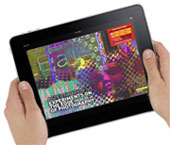 NEW! INTERACTIVE PDF and iPAD versions of aspect ratio: NEW! INTERACTIVE PDF and iPAD versions of aspect ratio:>> Click HERE for Expanded, interactive, image-rich pdf version for your desktop. >> Click HERE for an expanded, image-rich i-pad / ibooks (pdf) for your i-pad. (For a quickguide to loading pdfs into your ipad, click HERE.) |

PHOTOS: ABOVE eat danger #5 from a series of 20 images. INSET se/bikini/mannequin #11 from a series of 15 images.
what is a photograph?
When a phone is a camera and images are pixels displayed on a screen then what is a photograph?
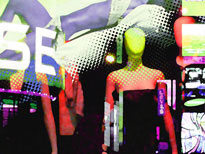 Can the images presented in this issue of aspect ratio be called photographs? I am sure an argument can be made that they are more properly called digital art or digital imagery. If I did not begin with my own photographs but with stock images or copyright free images, then that argument would be much stronger. [NEXT]
Can the images presented in this issue of aspect ratio be called photographs? I am sure an argument can be made that they are more properly called digital art or digital imagery. If I did not begin with my own photographs but with stock images or copyright free images, then that argument would be much stronger. [NEXT]BACK TO TOP
View my other work at MAXSINGER.COM

PHOTO: ABOVE emandem #4 from a series of 12 images
My rationale for calling these photographs is that they all derive from an image or images captured by me in my digital camera.
Once upon a (short) time ago we all knew exactly what a photograph was: an image on a physical substrate created by the effect of light upon sensitive (positive or negative) emulsions and viewed either as a print or projected onto a screen. [NEXT]
BACK TO TOP

PHOTOS: ABOVE AND BELOW deconstructed devil #14 and #22, 2 of 35 images from a sequence of deconstructions based upon a single photo [SEE INSET] the devil on west broadway.
Certainly most photographs today are still viewed as prints created through that old analog process and still put in photo albums or hung on a wall.*
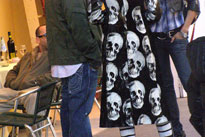
*Although today’s digital light jet printing process exposes one pixel at a time as opposed to an enlarger which exposes an entire image at once.
But, increasingly, photographs are viewed on the screens of electronic devices (e.g. cellphones, computors, etc.) where they are stored as files locally on the hard drive or on online sites such as Flickr. Are these images still properly called photographs? [NEXT]
BACK TO TOP

And what about an image whose starting point is not a photograph but one which is created entirely in Photoshop with shapes, brushes and effects? I can send the resulting file to a digital photolab and and have it output as a photographic print. Is this image a photograph? [NEXT]
BACK TO TOP
PHOTO: BELOW rain/river/drive 7 from a sequence of deconstructed images based upon a photo entitled east river in the rain.
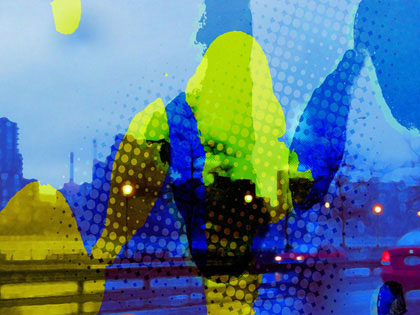
BACK TO TOP
to receive aspect ratio by e-mail, contact me and write signup in the subject line

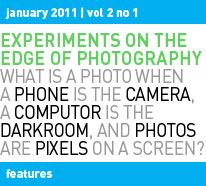
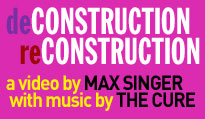
BE SURE TO CHECK OUT THIS MONTH'S COOL MUSIC VIDEO.
CLICK IMAGE ABOVE.
when is a photograph not a photograph?
deconstructing the image
Now that the floodwaters of the digital photography revolution have receded somewhat, perhaps we may view the changed landscape with some perspective. As an artist and photographer I am more than pleased with the creative power and scope this technology has given me. The things I can achieve in the digital darkroom with relative ease and low cost are things I might not have even been able to conceive of in the “old days.” >>
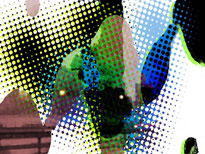
RAIN/RIVER/DRIVE 19. [See rain/river/drive 11 below.]
Of course there is always a downside. One of these may be the photographer/artist's ability to actualize the sheer multiplicity of variations latent in each image.* >>
*For example, on my Album — a portable digital image viewer — I have at least 3000 images [not raw files but finished images] and it is little more than half full.
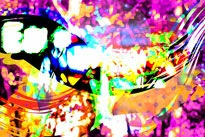
ea 3. from a series of collage abstractions.
Working in Photoshop, using layers and adjustment layers and layer comps I can easily create a dozen or more distinct variations from a single image, and, with a starting file which itself contains six or so separate images, the number of possible variations increases exponentially. >>
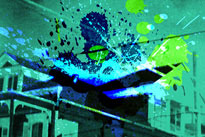
café brazil / variation seven above and café brazil / variation three below.
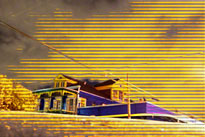
At some point I began to think of my working process as one of deconstruction of an image as each subsequent variation bears less and less of a resemblance to the original image, to such a degree that unless the viewer had seen the original he or she would not be able to connect the two, and, at that point, one can ask the question: when is a photograph no longer a photograph? >>
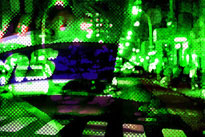
union square boogie woogie 6 above and union square boogie woogie 3 below.
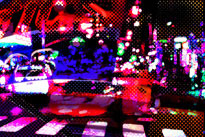
all photographs
copyright max singer
2006-2011.
website: www.maxsinger.com
contact: max@maxsinger.com